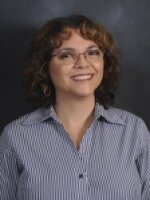University of West Florida archaeology students and researchers have spent the summer uncovering more details about the 1559 Luna Settlement.
The Tristan de Luna Settlement overlooking Pensacola Bay existed for just two years until 1561.
After its discovery in the fall of 2015, one of the primary goals of UWF researchers was to determine the spatial extent of the site. Now, after two summer field schools - conducted by the UWF Archaeology Institute - and over 900 shovel tests, they have a good idea.
“We now know that the site really does have a definitive boundary and that encompasses an area of about 27 total acres minimum…and if we turn it into a grid, it’s about 31 acres,” said Dr. John Worth, the project’s principal investigator. “Either one of those numbers makes this the largest mid-16th Century Spanish residential settlement in the entire southeast.”
That makes the Luna Settlement, known as Santa Maria de Ochuse, larger than St. Augustine when it was first established in 1565; and it was bigger than Santa Elena when it was initially established in 1566 on the coast of South Carolina.
“That’s because Luna brought 1500 colonist, whereas St. Augustine and Santa Elena had something on the order of 300-600 settlers(at first),” said Worth in reference to the initial size of those colonies.
“So, we had the largest settlement at the time. Therefore, we have the largest archaeological site of the 16th Century Spanish Colonial era here, which really puts it on the map.”
Worth says their research is really starting to bring the settlement site into focus. In addition to its size, they know it was ‘laid out’ on a level terrace on the bluff overlooking the bay, near the spot where three of Luna’s six shipwrecks have been discovered.
The research team is now able to kind of estimate where everything happened.
“We have the ships offshore at an anchorage. We have a landing spot. We have then sort of a path that leads up past a water source, a spring fed lake. Then we have the upper terrace,” said Worth. “We even think we know where the warehouse is, where they loaded all the new supplies, after four relief fleets came to resupply the expedition after the big hurricane.”
UWF archaeologists and students taking part in the 2017 Luna Settlement Terrestrial Field School have spent most of their time excavating just a couple of adjacent locations at the site.
Worth says a wealth of historical documents, combined with the discovery of some specific artifacts; lead them to believe that one of the spots, which they think was near the plaza, could mark where a high status Luna official once lived.

“That’s where we’re digging now and I think at present it would be the house of the official treasurer for the expedition, Alonso Velasquez Rodriguez,” said Dr. Worth, pointing out he’s (Velasquez) the only one that would have been likely to have carried a set of balance scale weights.
“He was the one who handled paying the sailors after they finished offloading and also who would have evaluated the estates of anybody that died during the expedition; so he would have had a set of scale weights.”
Discovered during a previous excavation, the scale weights were located in a thick midden of 16th century artifacts such as olive jar pieces and caret-head nails.
They also have the remains of a burned wooden post, including a small piece of the wood with a nail still in it.
It’s now about “putting two-and-two together” and looking to build on the information they already have.
“These olive jar sherds pre-dated the post because, when the post was dug, they used some of those sherds to actually go down in the posthole,” said UWF graduate student Christina Bolte, field director for the field school, surmising that it had to from the Luna period and, hopefully, was some sort of structure.
“So, this year, we launched the project with the hope of finding another one of those posts or perhaps even more than that, so that we could orient some sort of structure on the landscape and figure out where the rest of the settlement was oriented.”
As the field school wrapped up, they had not been able to confirm the discovery of another Luna posthole.
"We did not find another post, at least not that we know of definitely, yet," Bolte said.
However, after closer inspection, Dr. Worth says they did find one possible Luna-era post not far from last year's definite burned post. Also, in an adjacent excavation pit, they’ve identified some other potential features.

“These three possible stains that we’ve bisected, may end up being a Luna period structure that was here. But, it’s a lot of careful slow archaeology to get us to the point where we’re confident to say “yes, that’s what it was or definitely not.”
According to Worth, finding more posts could eventually reveal the complete physical footprint of a Luna-era building, which could spur the discovery of other structures such as the plaza and church, and so on. Such details will give UWF researchers a clearer picture of the large 1559 Spanish colonial settlement and a better understanding of daily life there.
You can follow the latest Luna research by reading Dr. Worth's blog.











